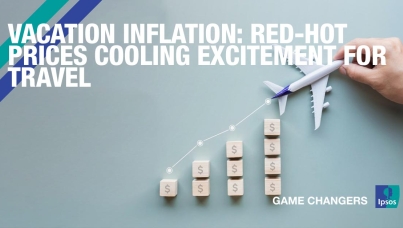Navigating Through Turbulent Times: The People Side of Change
Just about everyone understands that the current global economic crisis is forcing all of us into a period of adjustment and change. Because it appears that the change may be more far reaching than anything we have seen in quite some time, management will be carefully considering what levers it has at its disposal, and how these levers are likely to work in the emerging new environment. Some feedback from Canadian employees sheds light on this timely concern.
While half of Canadian employees believe that change is well managed at their workplace, only 15% fully agree with this statement.
Does it mean they are likely to reject change initiatives? No.
A majority of Canadian employees tend to understand and support the need for change.
But managing change is obviously complex. Staff reactions to change can be quite confusing. Interestingly, executives are not especially convinced that change is well managed either.
Why do staff focus on issues such as working conditions in turbulent times? How can staff show high professional satisfaction when a major shift is taken and the future of the organization is at risk?
Longitudinal studies conducted by Ipsos provide us with insight in this regard. Years of research for organizations undergoing major changes indicate that results are consistent across industries, countries, and in both the public and private sectors.
Traditional change models are based on 3 stages: "unfreezing", transition, and entry in a new period.
Ipsos' employee research uses a comparable 3 step approach.
Employee attitudes vs. change can be described as follows:
- defensive when change starts
- passive when change becomes destabilizing
- pro-active when change is finally implemented and endorsed
In stage 1, new strategies and objectives are not clear, the future of the organization (or the business unit's future) can be questioned. Employees don't understand the rationale for change or its implications--especially its individual implications. They are sometimes more confident in their own future within the organization than in the organization's future!
Staff show their attachment to the current situation by focusing on their direct environment. The progressive "unfreezing" explains that employee engagement and professional satisfaction usually remain at a high level. The employee-employer relationship is characterized by distance.
In stage 2, an accelerated pace of change is registered.
Staff are better informed and they start to understand how change will impact the organization. Their main concerns are now: how am I going to fit into this new organization? Do I have what it takes to do so?
Staff are destabilized: old points of reference are outdated; new ones take time to emerge. A typical request is training, because it is perceived as the most effective way to adjust to change. Professional satisfaction significantly drops.
In stage 3, employees are supposed to be back on board-when change is well managed (some organizations get stuck in stage 2 for long periods of time). Staff perceive an overall improvement of the situation. They are reassured concerning the future because they understand their role and their contribution in the new environment. People know what is going on and feel part of it. Engagement and job satisfaction progress at this point.
Efficient change management requires monitoring of the "people side" at each stage. This way, it is possible to track how change diffuses into the organization.
Logically, managers are exposed to change earlier than staff. But even managers and executives have some issues with change. In the example below, 60% of executives find change too rapid. Managers already are going through the stage 2 destabilization by the time staff are about to enter stage 2.
It is of paramount importance to ensure management's endorsement of change from the beginning of the process.
Major differences between business lines and units can be observed as well. Note that our recommendation is not to base all change-related actions on staff expectations, especially in stage 1. The priority should be to overcome staff "distance". The adequate answer is leadership: explaining the necessity and the purpose of change.
In stage 2, initiatives can better match employee expectations to be provided with means to adjust to change. Managers should support staff as they learn (to trigger off change endorsement and to develop confidence).
In stage 3, staff empowerment is recommended since employees are aware of the direction taken by the organization. Pro-activity needs to be fostered. Newly acquired skills need to be recognized.
Last but not least, Ipsos research establishes that drivers of employee engagement change over time.
Stage 1 being characterized by distance between employees and the organization, individual dimensions prevail. Staff are mostly motivated by their own individual perspectives.
Conversely, staff engagement is fueled by collective dimensions in stage 3 (e.g. collective objectives, corporate culture & image.) It clearly indicates that alignment is the key to reach stage 3.
Stage 2 being transitional, engagement drivers are a mix of individual and collective dimensions (e.g. my career progression on the one hand; my sense of belonging to the organization on the other).
Is your organization on the outset of a transition? Knowing how your people--your most important resource--will react to and in this change is important to the success of the transition and the success of your business. Our Employee Relationship Management team understands the challenges you face and has the tools you need to prepare for, to implement and to evaluate major change initiatives.



